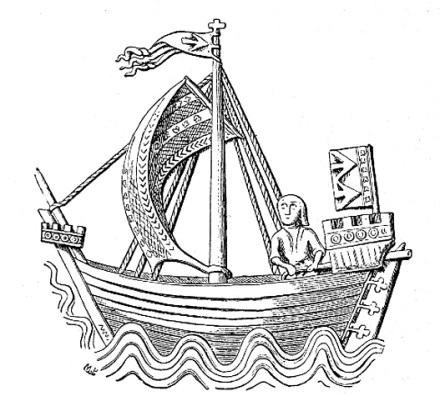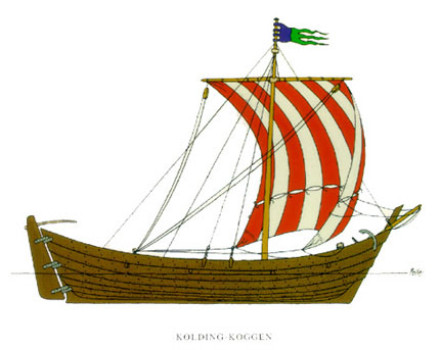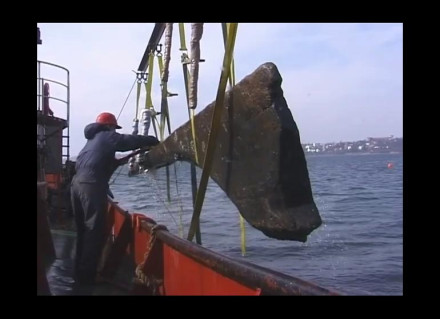History
Discovery
In 1943 a shipwreck was found in the inner fjord of Kolding in Denmark which was identified as a cog and dated to 1200-1400 AD. Parts of the wreck were studied by specialists from two museums: the Nationalmuseet and the Handels- og Søfartsmuseet. In connection with the Nationalmuseets Marinarkæologiske Forskningscenter (Maritime Archaeological Research Centre of the National Museum) that researches the oldest Danish ships, parts of the wreck were raised from the bottom of the fjord in 2001, after which they were investigated and measured. Most of the wreck remained at the bottom of the fjord however, and the raised parts were placed in holding tanks, awaiting funds for restoration.
Origin of the cog
The cog is a Northern European ship type thought to have originated in the Frisian or Danish tidal flats. In historical sources of the 9th century, cogs are already mentioned. They appear on many seals and coats of arms of Hanseatic cities.

The cogs were the medieval bulk carriers. The cog replaced the Viking ship as Northern Europe's war and trading ship of choice, and the merchants of the Hanseatic towns in particular knew how to exploit the large new ship type. The cog had a considerable loading capacity for the transport of bulk goods such as herring in barrels, grain, and timber, precisely the goods which the Hanseatics transported from the Baltic region to England and the rest of Western Europe. Using cogs, the Hanseatic merchants and skippers sailed, from around 1200, 'ummelandt', which is to say, north of Skagen. They thus created the medieval era's extensive maritime trade between the Baltic States and Scandinavia at one end and England and the Western and Southern European countries at the other. The cog was the backbone of this maritime trade and thus the foundation of the economic and cultural upswing which Northern Europe experienced in the Middle Ages.
Description
This wreck is the earliest find of a cog with a stern rudder.
Dendrochronological research dated the oak of the hull to 1190 AD.
The oaks grew in the south of Jutland between Ribe and Kolding.
The cog was a wide, flat-bottomed ship with a straight stem and prow and high sides. The keel was a solid timber on which the prow and stern were built. The flat bottom was carvel built (the planks lay edge to edge), while the sides were clinker built (the planks overlapped). Originally cogs had one mast with a square sail. The oldest cogs had rudders like Viking ships, but the later ones had stern rudders.

| Length | 68 ½ feet (20.9 m) |
|---|---|
| Width | 16 feet (4.9 m) |
Status
The Kolding cog is the best preserved of the Danish cogs. Approximately 70% of the ship is intact and can be reconstructed with confidence.

In 2016 the initiative Kolding Kogge Laug was founded, aimed at raising funds to build a replica of the cog.
References
- Nationalmuseet.
Dendro report on the Kolding Cog.